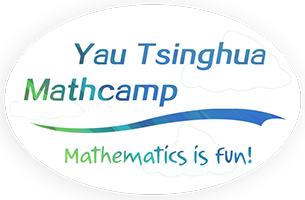the point is to discover them.
- Galileo.
Analysis and Topology II
Instructor: Jilong Tong (CNU)
Coaches: Heng Song 宋恒 (CNU)、
Yuwei Tan 谭钰炜 (CNU)
Location: A110
Course description:
Maybe everybody knows that analysis is the branch of mathematics dealing with "limits"
and related theories such as "continuity", "differentiation", "integration" etc. But what is
less well-known is that the underlying foundation on which people build the skyscraper of
modern analysis is the completeness (or in other words, the continuum) of real numbers.
Starting with completeness, one can prove theorems like
The intermediate value theorem (IVP). Let
The extremal value theorem (EVP). Let
An even less well-known fact is that it is the topology of the real line (associated with
the continuum of the real numbers) that really stands behind the above two theorems: the
connectedness for the IVP and the compactness for the EVP.
What is topology? Well, it is a monster with two faces: the first face is called the
“analysis face” on which you can find “neighborhood”, “open set”, “continuity”, “compact”
etc, and the second face is called the “geometry face” on which you can find words like
“space”, “connectivity”, “deformation” etc. There are many interesting theorems, including
Brouwer's fixed point theorem. If you stir a cup of coffee, there is some
point in the cup that ends up in the same position as it started in.
Hairy ball theorem. If you have a hairy ball, you can not get the hairs to
lie flat everywhere along the surface - some of the hair has got to stick up.
Some of the theorems may look “obvious” while others may look “absurd”. However, to give
a rigorous proof is always challenging.
In the first half of this course we will focus on the analysis face of topology: we start
with rigorous treatment on the topology of the real line, and their application to analysis of
one-variable functions. Then we extend the ideas/conceptions from the real line
Homeworks
be a continuous function. Then for any value
between
and
, there exists
such that
.
be a continuous
function. Then
attains both a maximal value and a minimal value on
.
, first to
finite dimensional Euclidean spaces
, and then to more general spaces, whose objects could
be functions or shapes etc, and explore their applications in analysis and geometry. Then in
the second half of this course we will turn to the geometry face of topology. In particular we
will explain how ideas from analysis (including multi-variable analysis and other facts from
the analysis face of topology) can be applied to prove Brouwer's fixed point theorem and the
hairy ball theorem.
